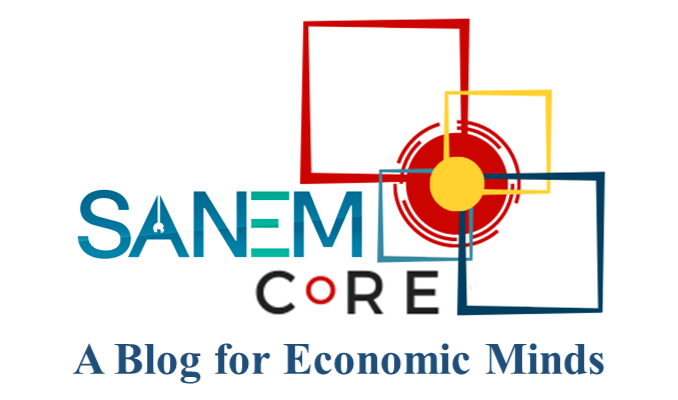Despite considerable demand for deeper regional integration in South Asia progress has been weak. The actual implementation of agreements frequently falls short of the stated goals. Tariff and non-tariff barriers, a lack of trade facilitation, a lack of political will and leadership, institutional deficiencies and low capability, and resource constraints have all been identified as important impediments in this context.
There is convincing evidence that deeper integration is needed for achieving larger development goals in South Asia. Deeper regional integration, through trade in goods and services and better transport facilities, is argued to improve the competitiveness of these countries to better participate in global trade. The promotion of a regional supply chain can be crucial in developing dynamic comparative advantages of these countries. Also, “peace dividends”, through intra-country stable political relations, will be immensely high. As global trade has been facing several challenges, while some are inherent to the global trading system (i.e., the stalemate at the WTO) and some are emerging challenges (i.e., US-China issue, COVID-19), deeper regional integration can help countries in South Asia to confront these global challenges.
However, the trade policy reforms in the South Asian countries have not been very conducive to deeper regional economic integration. Most of the countries in South Asia followed inward-looking trade policies during the 1960s, 1970s, and 1980s. The inward-looking trade policies aimed at protecting domestic industries through import-substitution strategies with the hope of rapid industrialization, growth and job creation. Tariffs and quantitative restrictions (QRs) on imports, export controls and overvalued exchange rates were put in place. Since the late 1980s, most of the countries in South Asia had embarked on employing different trade policy reforms. Despite that, the pace of trade policy reforms in South Asian countries became much slower in the recent decade. One major concern is that, in recent years, most of the South Asian countries have been experiencing a falling trade-GDP ratio. Especially for Bangladesh and India, the fall in the trade-GDP ratio has been much sharper than in other countries. Such falling trade-GDP ratio at a lower level of per capita GDP can be considered as “pre-mature de-trade-orientation”. To avoid this phenomenon and to enhance trade orientation, the expansion of the more export-oriented manufacturing sector needs to be encouraged.
Another important failure of the regional integration initiative in South Asia is the failure to promote trade and foreign direct investment (FDI) nexus. Promotion of intra-regional investments and attracting extra-regional FDI in the goods and services sectors in general, and energy and infrastructural sectors in particular, should be closely linked to the trade policies. Failure to do so results in the weak integration of South Asian countries in the regional and global value chains. This is also reflected by the fact that the countries in South Asia are experiencing a falling FDI-GDP ratio at a lower level of per capita GDP, which can be considered as the “pre-mature de-FDI-orientation”. Concerning attracting FDI, the experience in South Asia is quite diverse and poor. Except for India, FDI orientation is very low in South Asian countries. Especially, Bangladesh, Bhutan, and Nepal, the three least developed countries, have not been able to improve their FDI status significantly over the past couple of decades. To attract FDI, relevant trade and industrial policy reforms are essential. Furthermore, infrastructural development is needed to attract larger FDI. Country experiences suggest that FDI is positively associated with the magnitude of domestic investment. Low or stagnant domestic investment may show a lack of business confidence by the domestic investors, which may convey negative messages to the foreign investors. Therefore, South Asian countries need to improve the business environment, reduce the cost of doing business and facilitate domestic investment through eliminating policy-induced and supply-side constraints.
The falling trade and FDI orientation in South Asia are closely linked to the “premature deindustrialization” in most of the countries in South Asia, India in particular, when the shares of manufacturing in GDP and employment, already much lower than those of the early industrializers, have begun to fall at a level of per capita GDP much lower than those of early industrialized economies. Premature de-industrialization in South Asian countries is leading to a situation when these economies are becoming more and more service-oriented economies without going through a proper process of industrialization.
The experiences of the successful industrialized countries show that human capital has made a major difference. In most of the countries in South Asia, compared to the East and Southeast Asian countries, both the quantity and quality of human capital are at much lower levels. Therefore, policies and programs should be targeted at the rapid enhancement of human capital. There is also a need for proactive trade and industrial policies in terms of providing effective incentives to domestic investors, setting up special economic zones and attracting foreign direct investment (FDI) for diversified manufacturing industries.
Given the emerging challenges and complexities in the global trading regime, there is a need for re-thinking in the trade, investment and industrial policies in the South Asian countries for deeper regional integration. Three major areas need to be focused on. First, the effort for further trade liberalization needs to be continued with the aim of effective integration with the regional and global value chains. Second, the policies need to present an action plan to deal with the non-tariff barriers, trade facilitation and supply-side issues both at home and in export destination countries. Third, there is a need to be proactive to effectively engage with multilateral, regional and bilateral trading arrangements.
The article was published in Thinking Aloud on 1 February 2022.


RECENT COMMENTS